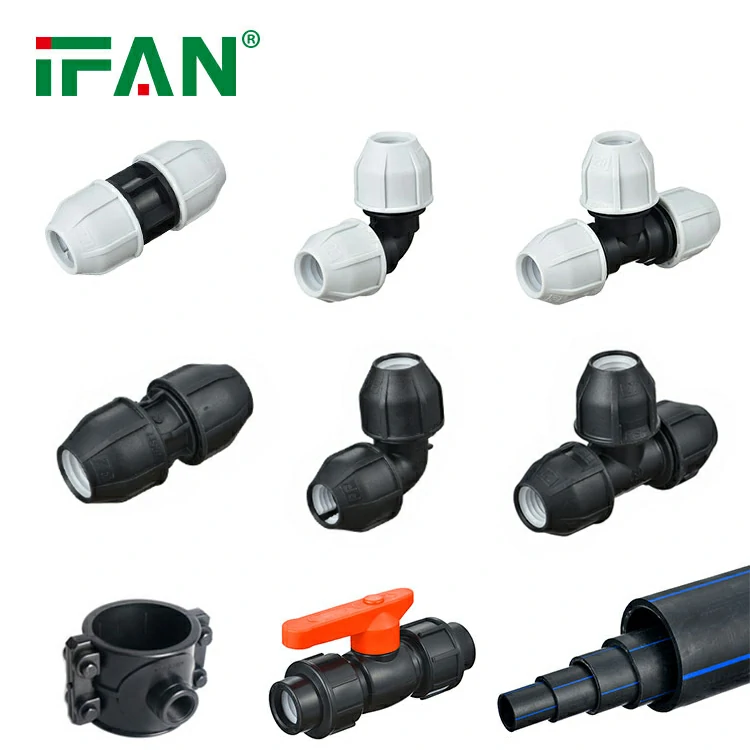PP compression fittings, also known as polypropylene compression fittings, are connectors used to join pipes or tubing in plumbing and fluid systems. They are specifically designed for use with polypropylene (PP) pipes, which are known for their durability, chemical resistance, and suitability for both hot and cold water applications.
How Do PP Compression Fittings Work?
PP compression fittings work by creating a secure, leak-proof connection between pipes or tubes without the need for welding, soldering, or adhesives. Here’s how they function:
- Components of a PP Compression Fitting:
- Body: The main part of the fitting that connects to the pipe.
- Compression Ring (Olive): A ring that compresses around the pipe to create a tight seal.
- Nut: A threaded component that tightens to compress the ring against the pipe and fitting body.
- Installation Process:
- Slide the compression nut onto the pipe.
- Insert the compression ring (olive) onto the pipe.
- Push the pipe into the fitting body until it reaches the internal stop.
- Tighten the compression nut onto the fitting body. As the nut is tightened, it compresses the ring against the pipe and fitting, creating a secure, watertight seal.
- Key Features:
- Ease of Installation: No special tools or skills are required, making them user-friendly.
- Reusability: They can often be disassembled and reused if needed.
- Leak-Proof Seal: The compression mechanism ensures a reliable seal, even under pressure.
- Versatility: Suitable for a wide range of applications, including water supply, heating systems, and industrial fluid transport.
PP compression fittings are widely used in residential, commercial, and industrial settings due to their reliability, ease of use, and compatibility with polypropylene piping systems.
View more:https://www.ifanfittings.com/


